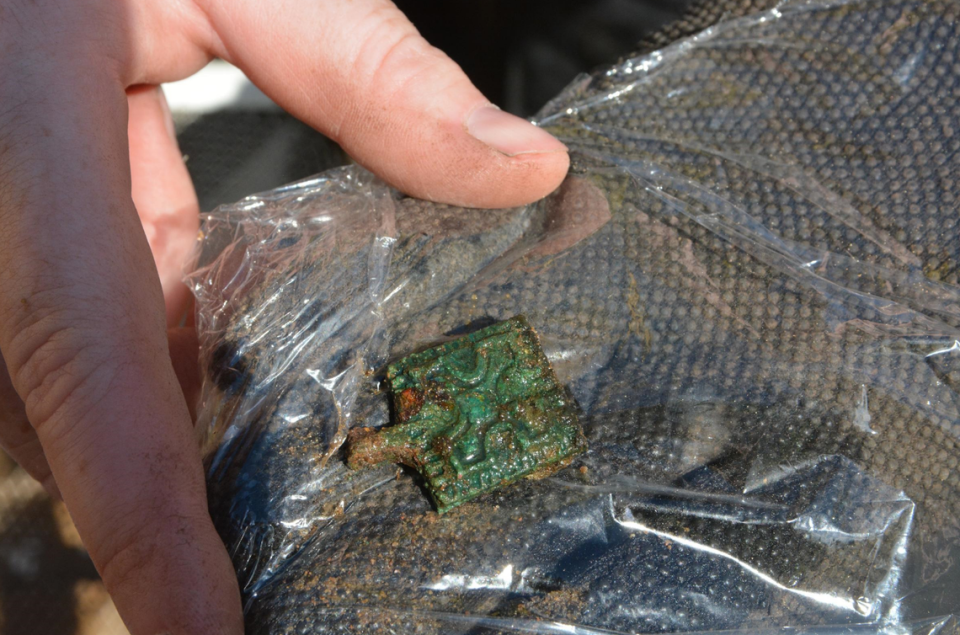Sword poking up from soil leads to discovery of 1,000-year-old Crusader cemetery
When Arthur pulled the sword from the stone, according to legend, he became the rightful king of England. When a local landowner in rural Finland recently pulled a sword from the soil, no one was crowned king — but a major archaeological discovery was made.
The landowner, who lives in Perttel, a small town about 75 miles northwest of Helsinki, spotted the sword in a trench after a bout of rain in August.
Upon examination, the warped, iron weapon turned out to be around 1,000 years old, according to a September news release from the University of Turku.
Assuming the sword wasn’t alone in the ground, archaeologists, who had been alerted to its discovery, scoured the area near where it was found.
Sure enough, they ended up uncovering other blades as well as artifacts, human bones and fragments of possible coffins, university officials said.
Among the more remarkable finds was a rare leather belt decorated with intricately designed pieces of bronze. Articles of clothing belonging to the deceased were also located.

But there wasn’t just one grave, university officials said. At least eight graves were discovered, and it’s likely there are many more, possibly dozens or even as many as 200.
The entire cemetery is believed to date to the Crusader-era, which spanned from 1050–1150 AD.
The Crusades were a series of military campaigns undertaken by Christian monarchies in Europe with the goal of conquering the Holy Land, according to the Metropolitan Museum of Art.
Sweden, a Christian kingdom, embarked on its own crusade of Finland and other Baltic territories, according to the book “Crusade and Conversion on the Baltic Frontier 1150 - 1500.”
Google Translate was used to translate a news release from the University of Turku.
Family searching for lost earring finds Viking-era burial instead, Norway photos show
Ancient finger painting? 57,000-year-old marks in cave are from Neanderthals, study says
Viking queen — not king — may have been ‘the key figure’ in Danish society, study says

